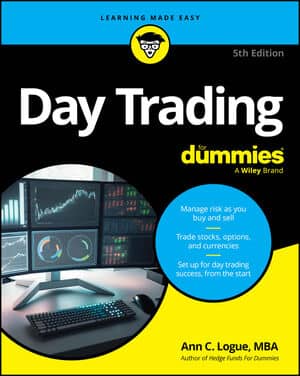Prices of stocks and other securities change constantly during the day. They move every time an order is placed. There’s a way that day traders can profit from those movements: It’s not exactly arbitrage; it’s scalping.
Especially active in commodities markets, scalpers look to take advantage of changes in a security’s bid-ask spread. This spread is the difference between the price that a broker will buy a security for from those who want to sell it (the bid) and the price that the broker will charge those who want to buy it (the ask — also called the offer in some markets).
In normal trading, the bid-ask spread tends to be more or less steady over time because the usual flow of supply and demand stays in balance. After all, under market efficiency, everyone has the same information, so their trading is consistent and allows the broker-dealers to generate a steady profit.
Sometimes, however, the spread is a little wider or narrower than normal, not because of a change in the information in the market, but because of short-term imbalances in supply and demand.
A basic scalping strategy looks like this:
If the spread between the bid and the ask is wider than usual, the ask is higher and the bid is lower than it should be. That’s because slightly more people want to buy than to sell, so the brokers charge the buyers higher prices. The scalper uses this as a sign to sell.
If the spread between the bid and the ask is narrower than usual, the ask is lower and the bid is higher than it would normally be. This situation occurs when sellers slightly outnumber buyers, and the broker wants to find buyers to pick up the slack. The scalper would be in there buying — and hoping that the selling pressure is short lived.
The scalper has to work quickly to make many small trades. He may buy at $20.25, sell at $20.50, and buy again at $20.30. He has to have a low trade cost structure in place or else he’ll pay out all his profits and more to the broker. He also has to be sure that the price changes aren’t driven by real information, because that makes market prices too volatile to make scalping profitable.
Scalping is akin to “picking up nickels in front of a steamroller,” some traders say, because of the risk of focusing on small price changes when bigger changes are underway.
Many day traders rely heavily on scalping, especially on slow market days. Because each trade carries a transaction cost, scalping can contribute to more costs than profits. Done right, though, it’s a nice way to make some steady profits. Keep in mind, though, that you aren't the only one looking for a lot of little profits.
A form of scalping is operated by the so-called dark pools, which are high-volume trading programs operated by some of the largest brokerage firms and hedge funds. These funds are designed to make money through a series of short-term trades that, in theory, won’t cause any market disruption. Sometimes, though, the programs go awry and turn into the steamrollers that crush smaller, more ordinary traders.
Scalping, as defined here, is perfectly legal. However, the word is also used to describe some illegal activities, such as promoting a security in public and then selling it in private.
If a big-name trader goes on his cable television show and talks about how great a stock is so that the price goes up and then he sells the stock the next day when everyone else is buying, he has committed the crime of scalping.

